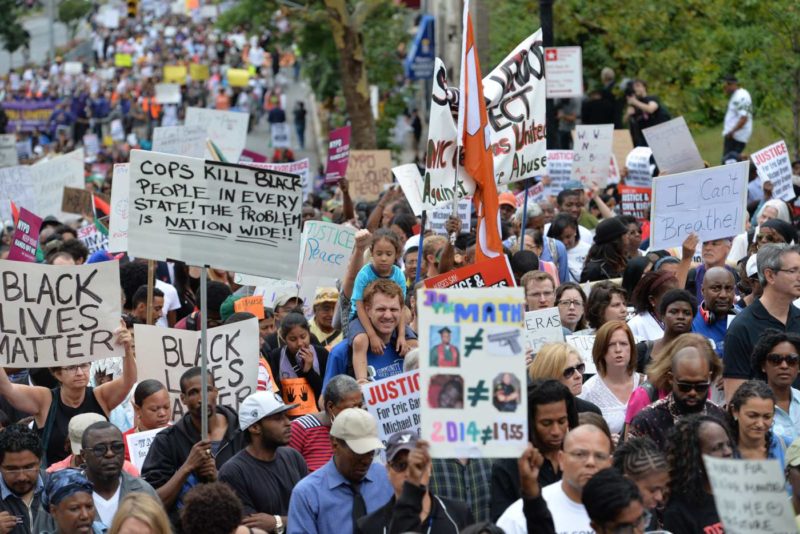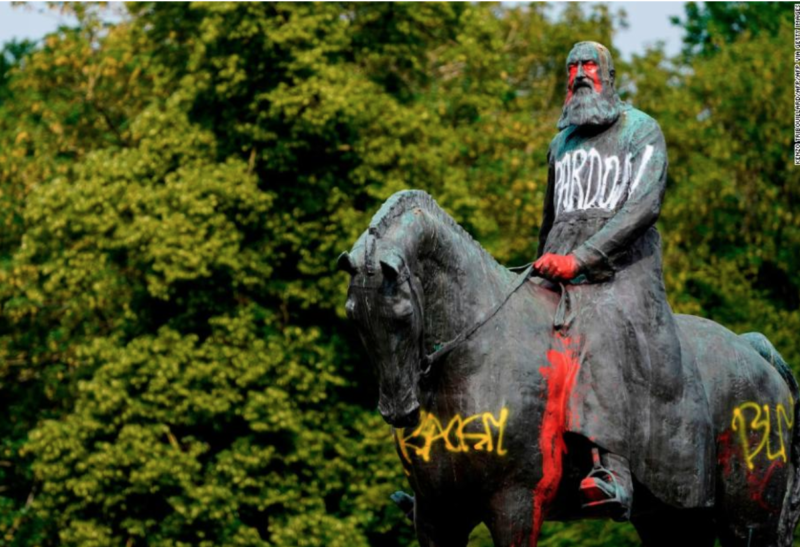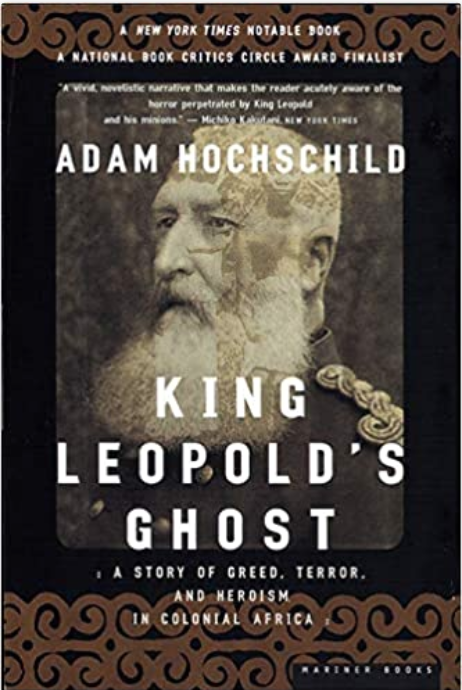Special News Series: Rising Up For Justice! – King Leopold statues removed in Belgium
Share
Explore Our Galleries
Breaking News!
Today's news and culture by Black and other reporters in the Black and mainstream media.
Ways to Support ABHM?
Introduction To This Series:
This post is one installment in an ongoing news series: a “living history” of the current national and international uprising for justice.
Today’s movement descends directly from the many earlier civil rights struggles against repeated injustices and race-based violence, including the killing of unarmed Black people. The posts in this series serve as a timeline of the uprising that began on May 26, 2020, the day after a Minneapolis police officer killed an unarmed Black man, George Floyd, by kneeling on his neck. The viral video of Floyd’s torturous suffocation brought unprecedented national awareness to the ongoing demand to truly make Black Lives Matter in this country.
The posts in this series focus on stories of the particular killings that have spurred the current uprising and on the protests taking place around the USA and across the globe. Sadly, thousands of people have lost their lives to systemic racial, gender, sexuality, judicial, and economic injustice. The few whose names are listed here represent the countless others lost before and since. Likewise, we can report but a few of the countless demonstrations for justice now taking place in our major cities, small towns, and suburbs.

To view the entire series of Rising Up for Justice! posts, insert “rising up” in the search bar above.
King Leopold II statues are being removed in Belgium. Who was he?
By Richard Allen Greene, CNN
June 11, 2020
While statues of slave traders, imperialists and US Confederate leaders are being torn down, removed or protested against in the English-speaking world, Belgium has begun removing statues of its one-time King Leopold II.
Never heard of him. Who was King Leopold II?
One of the most brutal and ambitious of the 19th century European exploiters of Africa, Leopold II was king of Belgium for more than 40 years, from 1865 to 1909. A first cousin of Queen Victoria, he ruled at a time when Europeans were colonizing — that is, conquering — other parts of the world. Leopold was responsible for a particularly cruel part of that conquest, during the so-called “Scramble for Africa.”
What exactly did he do?
Leopold hired the adventurer Henry Morton Stanley to explore the Congo River basin, signing purported treaties with local leaders along the way. Leopold then used the treaties to stake a claim to an enormous chunk of central Africa — more or less the territory that is now the Democratic Republic of Congo. Belgium then as now had a parliament and government that actually ran the country, and they did not support Leopold’s colonial plans, so he declared the “Congo Free State” to be his personal possession, not Belgium’s, and got other countries including the United States and European powers to recognize him as its “proprietor.”
What did he get out of that?
A huge fortune, for starters, based first on ivory and then on rubber when the automobile and bicycle industries took off. Leopold used a private army to coerce Africans to gather wild rubber from the vines of the rainforests. His army would seize the women and children of villages to force men to collect rubber in ever-increasing quotas.

That sounds brutal.
It was worse than it sounds. Men were regularly worked to death, while hostages sometimes starved. Naturally, there were rebellions against the “proprietor,” who suppressed them with particular cruelty: His troops were ordered to produce the severed hand of a rebel for each bullet they expended. That meant if the troops shot and missed, they would sometimes cut the hand off a living person. Led by white officers, the troops themselves were often Africans, making them complicit in the trauma the colony suffered. Historians estimate that under Leopold’s misrule, 10 million people died.
Was that kind of behavior acceptable even then?
Other colonial empires such as Portugal, France and Germany copied Leopold’s methods, but by the end of his life, Leopold was seen as a villain and forced to relinquish control of the so-called Free State. He made Belgium buy it from him a year before his death, and it was renamed the Belgian Congo. It gained independence in 1960 and was first renamed Zaire, then the Democratic Republic of Congo after its long-time dictator Mobutu Sese Seko was toppled in 1997.
Leopold II seems largely to have been forgotten given what he did.
Leopold’s name may not be widely remembered today, but a phrase first used to describe his actions lives on: Crime against humanity.
See the original article here.
Read more about it in this well-researched and well-written history:












Comments Are Welcome
Note: We moderate submissions in order to create a space for meaningful dialogue, a space where museum visitors – adults and youth –– can exchange informed, thoughtful, and relevant comments that add value to our exhibits.
Racial slurs, personal attacks, obscenity, profanity, and SHOUTING do not meet the above standard. Such comments are posted in the exhibit Hateful Speech. Commercial promotions, impersonations, and incoherent comments likewise fail to meet our goals, so will not be posted. Submissions longer than 120 words will be shortened.
See our full Comments Policy here.